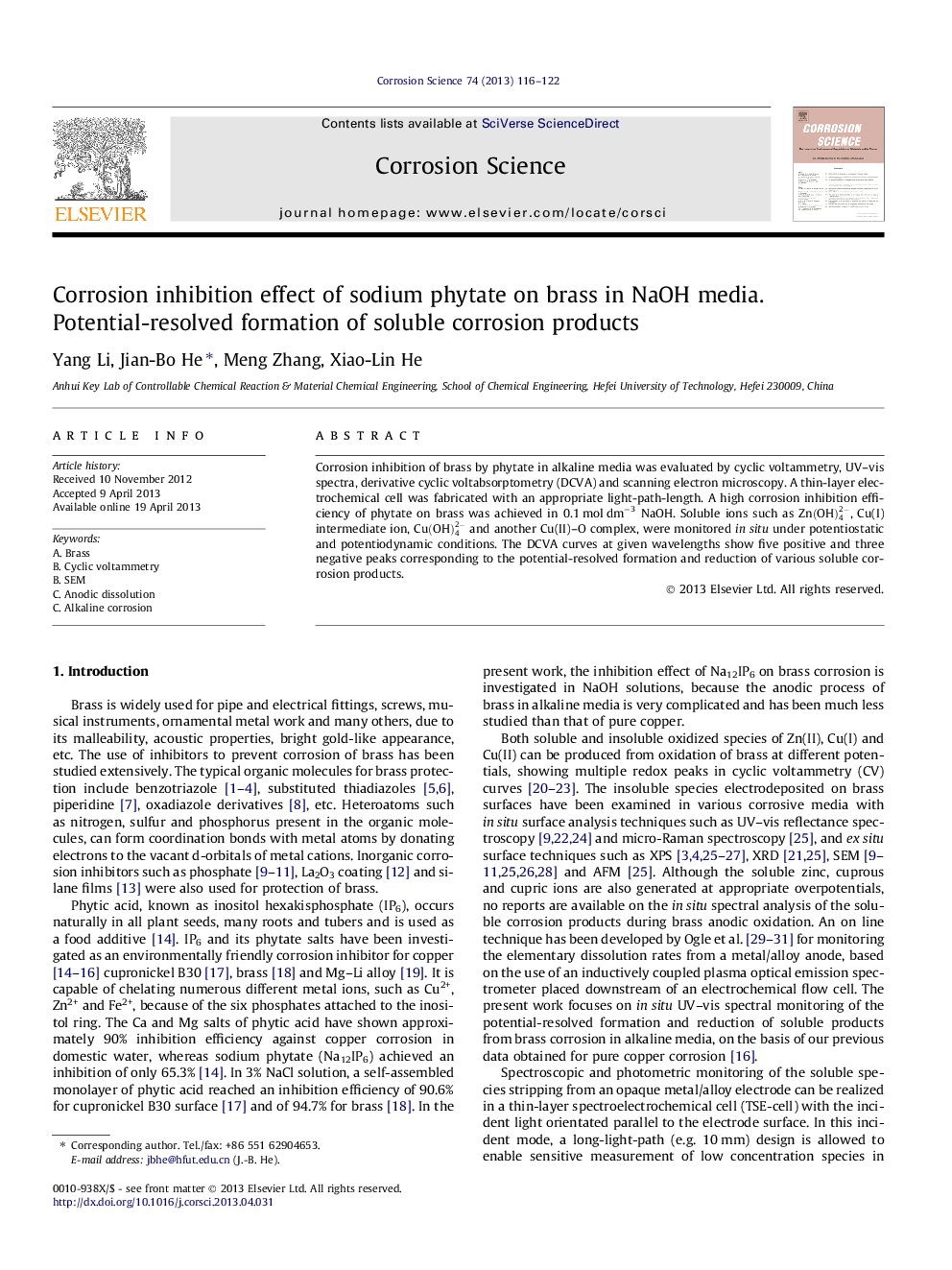| Article ID | Journal | Published Year | Pages | File Type |
|---|---|---|---|---|
| 1469131 | Corrosion Science | 2013 | 7 Pages |
•Phytate greatly inhibits corrosion of brass in NaOH.•Eight cyclic voltabsorptometry peaks correspond to reactions of various ions.•Phytate can suppress formation of various zinc and cupric ions.•A spectroelectrochemical cell allows its light path length to be changed.
Corrosion inhibition of brass by phytate in alkaline media was evaluated by cyclic voltammetry, UV–vis spectra, derivative cyclic voltabsorptometry (DCVA) and scanning electron microscopy. A thin-layer electrochemical cell was fabricated with an appropriate light-path-length. A high corrosion inhibition efficiency of phytate on brass was achieved in 0.1 mol dm−3 NaOH. Soluble ions such as Zn(OH)42-, Cu(I) intermediate ion, Cu(OH)42- and another Cu(II)–O complex, were monitored in situ under potentiostatic and potentiodynamic conditions. The DCVA curves at given wavelengths show five positive and three negative peaks corresponding to the potential-resolved formation and reduction of various soluble corrosion products.
